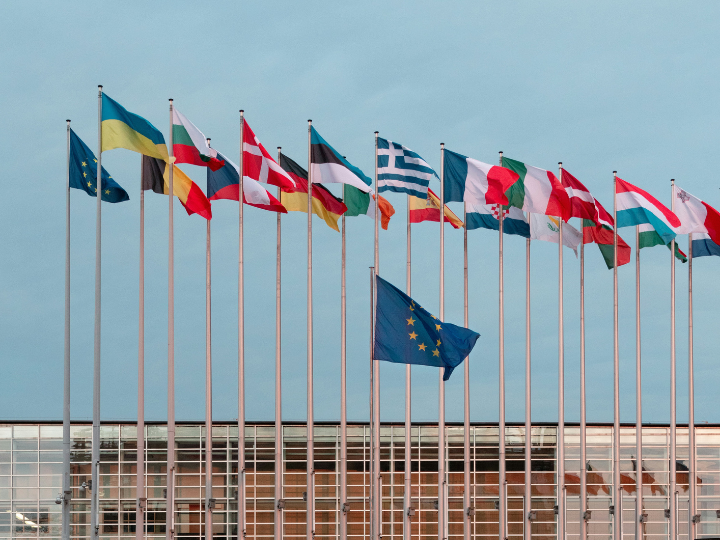Reacting to the announcement of The Most Endangered’ 2016, Tibor Navracsics, European Commissioner for Education, Culture, Youth and Sport, said: “Our cultural heritage is an integral part of who we are as human beings"
Europa Nostra, the leading European heritage organisation, and the European Investment Bank Institute (EIBI) announced that the Archaeological site of Ererouyk and the village of Ani Pemza in Armenia, Patarei Sea Fortress in Tallinn (Estonia), Helsinki-Malmi Airport in Finland, Colbert Swing Bridge in Dieppe (France), the Kampos of Chios in Greece, the Convent of St. Anthony of Padua in Extremadura in Spain, and the Ancient city of Hasankeyf and its surroundings in Turkey are the most endangered heritage sites in Europe in 2016 .
The two organisations decided - following a firm recommendation from an international advisory panel of experts - that the Venice Lagoon in Italy should be declared the most endangered heritage site in Europe, given the paramount importance of this heritage landmark to Europe and the world, as well as the complexity and magnitude of the challenges posed .
Reacting to the announcement of The Most Endangered’ 2016, Tibor Navracsics, European Commissioner for Education, Culture, Youth and Sport, said: “Our cultural heritage is an integral part of who we are as human beings. We must not take it for granted. On the contrary, we need to cherish and protect it to keep it alive. That is why the EU is working with regions and cities to help them preserve their heritage sites. Our aim is to enable local communities to discover and experience their heritage, and to give them a say in how it is developed and managed. This is a great way of bringing people together, of building open, tolerant societies – something that is today more vital than ever.”
“Well-run cultural and natural heritage projects can bring important economic and social contributions to regional development and to urban renewal throughout Europe. This is the reason why the EIB Institute and the European Commission participate actively in ‘The 7 Most Endangered’ programme,” added Francisco de Paula Coelho, Dean of the EIB Institute.
The Most Endangered heritage sites in Europe in 2016
Archaeological Site of Ererouyk and village of Ani Pemza, ARMENIA
Ererouyk is a superb monument of Early Christian architecture, an architecture of great variety and distinction, today often subjected to neglect, if not willful destruction, in most of its original homeland around the Eastern Mediterranean. Armenian religious architecture, amongst the finest and most innovative, is well represented by Ererouyk.
The monument dates back to the 6th century and lies on a rocky plateau close to the river that forms the border with Turkey, in the vicinity of the ancient capital Ani. All around the three-aisled basilica lay the remains of funerary and other relevant monuments which deserve immediate study and preservation. This is crucial for the understanding of a settlement within a multi-ethnic and multi-cultural framework during the Middle Ages, as demonstrated by relevant archaeological findings that also need to be studied and displayed.
The site is at constant danger from earthquakes, a danger increased by the condition of the monument. Yet, if preserved and well managed, it has the potential to give life to the whole region as a site that will attract visitor, with the nearby Soviet-era style village of Ani Pemza, built in 1926, serving as a potential centre for cultural tourism.
Patarei Sea Fortress in Tallinn, ESTONIA
Patarei is a complex of buildings, originally built as a naval fortress under Tsarist rule in 1829-1840. It became a prison between 1920 and 2005, and contains monuments to victims of both Nazi and Stalinist rule. The site is thus closely linked to the sad vicissitudes of Estonia’s recent history. Its rapid deterioration is due to lack of maintenance in harsh climatic conditions.
Helsinki-Malmi Airport, FINLAND
Helsinki-Malmi Airport is a rare surviving example of pre-World War II aviation architecture, built for the 1940 Olympic Games, scheduled to be held in Helsinki but cancelled due to the war.
Malmi Airport, complete with its original hangar, terminal and runways, is still in use with about 40,000 landings per year, offering the only free-schedule international service within 150 km. The area has been declared a cultural environment of national significance by Finland’s National Board of Antiquities. Its open meadow has considerable biodiversity and makes the nature path encircling the site very popular among locals. Helsinki's new General Plan proposes to fill the airport with apartment blocks to be constructed in the early 2020s, while the state is to withdraw its operations from the airport by the end of 2016.
Colbert Swing Bridge in Dieppe, Normandy, FRANCE
The Colbert Bridge, built in 1889, is contemporary with the Eiffel Tower and still functions with its original system of hydraulic pression, carrying about 12,000 vehicles and 1,800 pedestrians daily, makes it an important example of the technical and architectural achievements of the late 19th century. It swings 6 to 8 times each day for the harbour traffic and ensures greater reliability than many modern bridges.
Although one of the earliest examples of “moveable” architecture, a living memory of Dieppe’s cultural and social history and potentially a tourist attraction, its owner, the Syndicat Mixte du Port de Dieppe is planning to demolish it and replace it with a new structure in 2017.
Kampos of Chios, island of Chios, GREECE
The Kampos of Chios is a semi-urban, semi-rural area where the islands’ wealthier families built beautiful mansions of local stone, surrounded by citrus orchard estates. The 200 houses and towers which survive, combined with high stone walls separating the estates and narrow surrounding lanes, create a poetic landscape.
The sole surviving example of an originally Genoese colonial order - although frequently rebuilt since the 14th century as a result of earthquakes (as in 1881) - the Kampos is now in danger.
Convent of St. Anthony of Padua, Extremadura, SPAIN
The Convent of St. Anthony of Padua near Cáceres comprises a late Gothic church, built in 1476 with some small additions in the Renaissance period and, most notably, others from between 1656 and 1661. The convent lies in the village of Garrovillas de Alconétar, which has a long history and a wealth of monuments; all in danger of dereliction as its inhabitants move on to larger cities.
Ancient city of Hasankeyf and its surroundings, TURKEY
Hasankeyf, sitting on the banks of the River Tigris, is one of the most important architectural and archaeological sites in Europe, boasting a rich biodiversity and 12,000 years of human history. Masterpieces of Islamic architecture, dating from the 12th to 15th centuries C.E., make the town one of the best preserved witnesses to Seljuk urban culture, particularly from the Artukid and Ayyubid dynasties.
A small town with a great heritage, Hasankeyf already attracts about 500.000 visitors each year, a number expected to rise. Given its historical, architectural and economic significance for the region, public opinion supports its preservation. The area was declared a First Degree Archaeological Site by Turkey’s Supreme Board of Monuments in 1978 and has been under the protection of the Culture Ministry’s General Directorate of Antiquities and Museums since 1981.
Venice Lagoon, ITALY
There could be no Venice and no Venetian civilization without the lagoon. Few historic sites in the world demonstrate so clearly the interdependence of humankind with our environment, of nature with culture.
Yet just as the world contributes to the conservation of monuments in the city, unsustainable development is cutting the physical branch on which Venice has always perched.




 By: N. Peter Kramer
By: N. Peter Kramer

